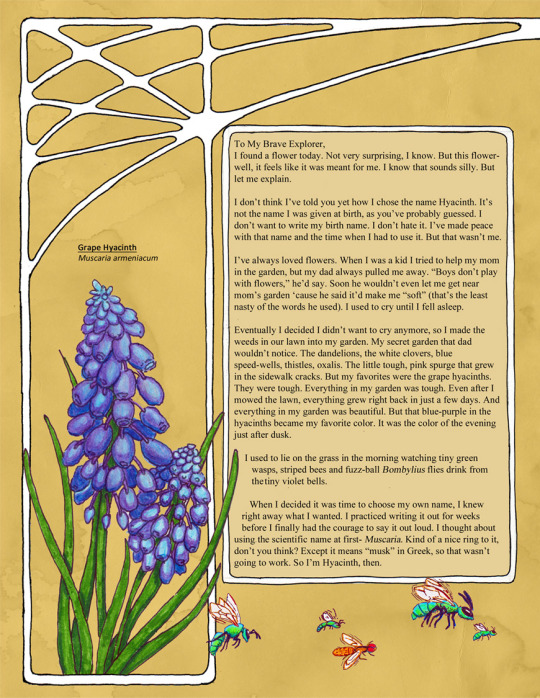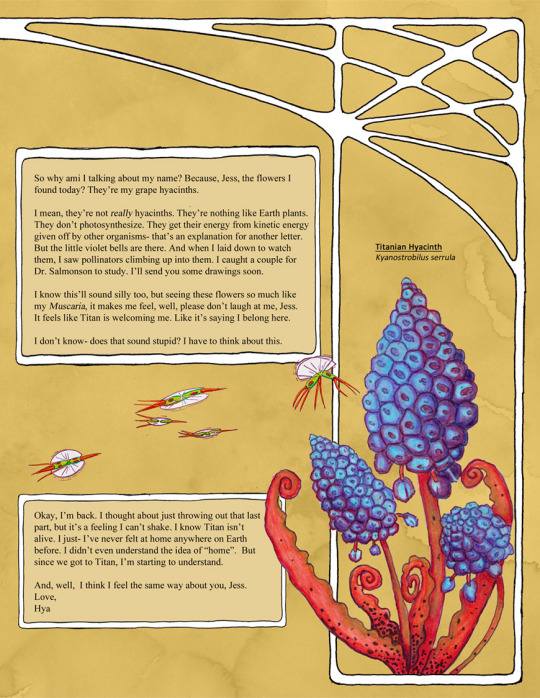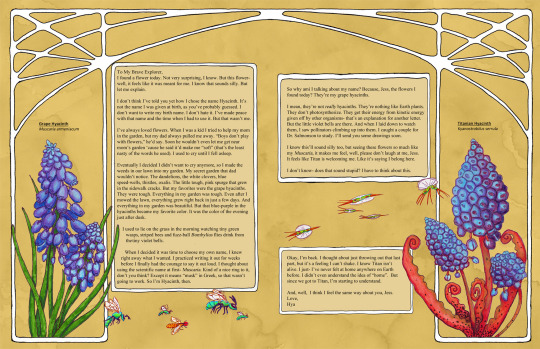#ecological updates
Explore tagged Tumblr posts
Note
the "strange place" could be a private wildlife collector? i know the buying and selling of wild animals as pets can be pretty bad in the uk (or at least it is w/ birds of prey? that's abt what i know)
OH that's a good idea, that's going to be one of my top choices for if I DO end up needing to change the "twoleg den" in the upcoming super edition. Private wildlife collectors are a HUGE problem because the laws on simply owning exotic animals (as long as they're not covered by the Dangerous Wild Animals Act) are suuuuper lax in the UK, and the Zoo Licensing Act only applies if you accept general admission.
(and even then, specifically, you can take admission a limited amount of times a year. James Wellington's Animal Welfare Nightmare Extravaganza, beloved winter tradition, £25 each, kiddies of edible height get in free)
Birds in particular are a huuuge issue because there's big oversights in the laws surrounding the keeping of birds of prey. You don't actually need a license to own any birds except ostriches and cassowaries, or one of the five destructive invasive birds. Your pet eagle just needs to be registered so they know you didn't snatch it from the wild. Licenses will only apply if you're breeding, selling, or using it for falconry.
Maybe I could even tie this hypothetical antagonist guy to Sharptooth/One Eye/The God of Summer's previous human incarnation, on some off-chance the series ends up using this villain again. That could be kinda neat.
#for a country that jabs at america for our birdsona a lot. brits suuuuure have some lax laws regarding eagle ownership#I love ragging on my country but we really went ham with the Migratory Bird Treaty Act#UK you want to enter the MBTA with the US Canada Mexico Russia and Japan. You want to do it sooooooo bad#also side note one of those Five Destructive Birds is a close relative of the Dreaded Australian Bin Chicken#Thing you do NOT need a license to own in England: an EAGLE#Thing you DO need a license to own: big-nose seagull#WELCOME BACK TO ANOTHER EPISODE OF THINGS YOU DIDN'T THINK YOUD LEARN FROM A CAT BLOG#Last time I taught you that we need to destroy sitka plantations to protect an unique and endangered biome#Today I teach you of eagle ownership#next time? who knows#bone babble#ecological updates
91 notes
·
View notes
Text

thus far there is no evac order for my area of northeast los angeles, but the closest fire to us is the eaton fire, which puts us in a red flag zone. mom and i have our bags packed and ready if we have to go. fires have never been this close or has scary before. the last time a fire could be seen from my area was the bobcat fire in 2020, i think. and in times such as these, i am reminded of the end of joan didion's essay "the santa ana" from slouching towards bethlehem.
#local xenomorph is typing#this has been one of the most intense days of my life#checking in on my cohort and friends and family in other parts of the los angeles#literally raced across the city back to my apartment to help mom and be with her#trying to remain alert and vigilant of any updates or warnings#although fire is part of our history and natural ecology; it’s the way they're burning that makes everything hurt#(also off topic but man.... every day i miss joan didion)
11 notes
·
View notes
Text
So the "down" arrow hasn't worked on my computer since September, but I've been too busy to be able to spare my computer for several days while being fixed, so I've just been working around it. Until this morning, when I discovered that the program that I now need to use for my research (....because the old version of it relies on a program that's been discontinued) requires that I scroll through options with the arrow keys, and I can't just scroll up and loop around. Which... is lovely.
My advisor's solution, while I'm trying to find a place that will do a fast repair: connect an extra keyboard to my laptop. Pretty sure I can hear my remote sensing prof (who has already criticized my laptop for being old, my external hard drive for being outdated and slow technology, and my mouse for randomly turning off) screaming in the distance.
#personal#grad school#apparently the GIS branch of geology is very into new and cutting-edge tech#and does not often run into Biology (and particularly Ecology) people#there are computers in the lab that still run on windows XP because the software that goes with the hardware needs it#one computer that has a DO NOT CONNECT TO THE INTERNET sign on it because if it updates someone is screwed#like my five-year-old computer is nothing there's 15-year-old computers still being used
10 notes
·
View notes
Text
today we're going on a bat walk to a site where ive been told pipistrelle bats roost! they're one of a bunch of species of bat we have in wales, but they're both the smallest and the most common. theyre literally so tiny, between 3.5-4.5cm big.... babies.... and look. doggy!!!!

photo from the bat conservation trust
19 notes
·
View notes
Text
Gotta love when TAs add memes

makes me wanna cry less
5 notes
·
View notes
Text
Between Refuge and Risk: The Avalanche Paradox for Mountain Ungulates
ESP version ITA version In the changing context of mountain environments, climate change manifests with rapid and significant transformations, profoundly influencing sensitive communities and ecological processes. A crucial element in this landscape is represented by the seasonal conditions of snow, which prove to be determinants for the dynamics of mountain ungulate populations. These variations directly affect vital ecological and physiological aspects, such as the energy costs of locomotion, vulnerability to predation, and the availability and quality of forage, both in summer and winter.
A recent study published in Nature explored how mountain goats, adapted to steep terrains to evade predators, paradoxically find themselves at risk due to the frequent instability of these slopes, which can generate avalanches. The research, conducted in southeastern Alaska on 421 goats monitored for 17 years, highlights that avalanches cause between 23% to 65% of annual deaths, primarily affecting the young and small. These steep areas, chosen to mitigate the risk of predation, turn out to be ecological traps due to their high risk of avalanches. This risk is variable, with peaks during the most unstable months for snow, especially at the beginning of winter and during the spring thaw.
The migratory and wintering strategies of ungulates further influence their exposure to the risk of avalanches. For example, mountain goats in Lynn Canal are extremely migratory, moving to low-altitude forested habitats during the winter, while other populations remain at higher altitudes, exposing themselves more to danger.
Climate change exacerbates this dynamic, modifying the frequency and intensity of avalanches, and consequently, the spatial and temporal distribution of these lethal events. Forecasts indicate an increase in wet avalanches compared to those of dry snow, with a potential increase in avalanche mortality rates.
The persistence of this risk in mountain systems, combined with the anticipated rise in the snowline elevation, may reduce the avalanche danger at lower altitudes, but the risk will continue to be a significant component in the ecology of mountain ungulates. However, the demographic influence of avalanches on ungulate populations is likely to persist in the future because both the avalanche danger and the ranges of mountain ungulates are expected to shift upward as the climate warms.
It is essential to emphasize that the growth rates of mountain goat populations are particularly low and can only sustain limited annual removals. Therefore, avalanche mortality, especially among young individuals, can have severe demographic impacts, leading to population decline. These data highlight the need to reconsider conservation and management strategies for these vulnerable populations.
The intensification of climate change and its extreme manifestations, such as avalanches, necessitates a rethinking of conservation policies to protect not only mountain ungulates but also the ecological integrity of mountain environments, which are crucial for global biodiversity.
Source: https://www.nature.com/articles/s42003-024-06073-0
Credits picture: NPS/Diane Renkin

#Climate Change#Avalanches#Mountain Goat#Goat#Mountain Environment#Mountain#Snow#Conservation#Ecology#Animals#Ungulates#Drops Of Science#Science#News#Updates#Latest News#Nature#Biodiversity#Biodiversity Loss
4 notes
·
View notes
Text



A new page from my Field Guide to Saturn WIP.
The book consists of messages exchanged between two explorers, Hyacinth and Jess, as they study the life of the Saturnian system of moons and rings.
This message from Hya talks about her fondness for a flower on the moon Titan that resembles the Earth flower from which she took her new name when she came out as trans.
Here's the full text of her letter:
"To My Brave Explorer,
I found a flower today. Not very surprising, I know. But this flower- well, it feels like it was meant for me. I know that sounds silly. But let me explain.
I don’t think I’ve told you yet how I chose the name Hyacinth. It’s not the name I was given at birth, as you’ve probably guessed. I don’t want to write my birth name. I don’t hate it. I’ve made peace with that name and the time when I had to use it. But that wasn’t me.
I’ve always loved flowers. When I was a kid, I tried to help my mom in the garden, but my dad always pulled me away. “Boys don’t play with flowers,” he’d say. Soon he wouldn’t even let me get near mom’s garden ‘cause he said it’d make me “soft” (that’s the least nasty of the words he used). I used to cry until I fell asleep.
Eventually I decided I didn’t want to cry anymore, so I made the weeds in our lawn into my garden. My secret garden that dad wouldn’t notice. The dandelions, the white clovers, blue speed-wells, thistles, oxalis. The little tough, pink spurge that grew in the sidewalk cracks. But my favorites were the grape hyacinths. They were tough. Everything in my garden was tough. Even after I mowed the lawn, everything grew right back in just a few days. And everything in my garden was beautiful. But that blue-purple in the hyacinths became my favorite color. It was the color of the evening just after dusk.
I used to lie on the grass in the morning watching tiny green wasps, striped bees, and fuzz-ball Bombylius flies drink from the tiny violet bells.
When I decided it was time to choose my own name, I knew right away what I wanted. I practiced writing it out for weeks before I finally had the courage to say it out loud. I thought about using the scientific name at first- Muscaria. Kind of a nice ring to it, don’t you think? Except it means “musk” in Greek, so that wasn’t going to work. So I’m Hyacinth, then.
So why am I talking about my name? Because, Jess, the flowers I found today? They’re my grape hyacinths.
I mean, they’re not really hyacinths. They’re nothing like Earth plants. They don’t photosynthesize. They get their energy from kinetic energy given off by other organisms- that’s an explanation for another letter.
But the little violet bells are there. And when I laid down to watch them, I saw pollinators climbing up into them. I caught a couple for Dr. Salmonson to study. I’ll send you some drawings soon.
I know this’ll sound silly too, but seeing these flowers so much like my Muscaria, it makes me feel, well, please don’t laugh at me, Jess. It feels like Titan is welcoming me. Like it’s saying I belong here.
I don’t know- does that sound stupid? I have to think about this.
***
Okay, I’m back. I thought about just throwing out that last part, but it’s a feeling I can’t shake. I know Titan isn’t alive. I just- I’ve never felt at home anywhere on Earth before. I didn’t even understand the idea of “home”. But since we got to Titan, I’m starting to understand.
And, well, I think I feel the same way about you, Jess.
Love,
Hya"
22 notes
·
View notes
Text
im sorry for the sudden influx of dungeon meshi I am watching the anime and I’m a biology nerd and I fucking love food and also I want to marry that fucking blonde nerd
#I would keep him updated on dragon facts#and eat whatever dungeon monster he wants#even if it’s a texture nightmare#we would have monster impression competitions#and I would listen to his opera-esq rendition of the mermaids song whenever he wants#I also fucking love ecology studies#kill me now I’m holding off on reading the manga so fucking hard#I don’t want to mess this up I want to experience it with the voice acting and animation I want to hold out#I mustn’t know
3 notes
·
View notes
Note
Can definitely confirm as a Canadian that this has been a scary summer for wildfires. I live in southern Ontario, and could barely go outside for a week because the smoke coming in on the wind was so bad, I can’t imagine how scary it is for people living in the affected areas. My cousin lives in BC and I’ve been worried about him.
I'm really sorry you have to deal with that. Whenever I open any wildfire maps or smoke maps, Canada is just covered by it. Depending on the scale the map is zoomed at, it looks like the entire province of BC is covered. It looks so scary. Do y'all typically get fires that bad in Ontario? I know that BC and Alberta have more of the typical fire-supported ecosystems (mountains, conifer forests, etc), although that still doesn't mean the amount/intensity of the fires are normal. I haven't put a lot of research into wildfire in Canada, since I was mostly focusing on the area where my story was set, but I was initially quite surprised at how bad it was in the eastern areas of the country too. I hope your cousin is safe.
This summer has been pretty rough for my family, with my Papa's health taking a steep decline, him being hospitalized and placed on hospice, and then dying last month. (I really wish I could say it was peaceful but it was awful to witness.) My aunt was supposed to go on a camping trip with some friends up in Canada, but had to cancel it because of everything happening here. It turned out to be a blessing in disguise I guess--a really weird thing to call a "blessing" I know-- because her friends who went to Canada had to emergecy evacuate the campground and flee because the wildfires were closing in. They left all their belongings. Fortunately, the fire was stopped right before it reached the campground, but it was scary. I'm glad my aunt was not there and was safely down here. These people were fortunate because they're just tourists and can go home--so many people who actually live in Canada right now are in such a scary situation. Many people are not so fortunate, either by losing their life or their homes or their livelihoods.
#side note--does anyone know of any reputable relief links for fires in canada?#i'm already including one for lahaina/maui in my chapter notes for next chapter#it just feels right because so many terrible things have happened in real life related to wildfire in the time since i last updated#especially since this next chapter has a focus on. well. wildfire history and wildfire ecology and wildfire survival.#i don't want to seem like i am trivializing the situation for a fanfiction.#quara asks
3 notes
·
View notes
Text
South Korea to cut biomass energy subsidies amid deforestation criticism
South Korea’s government will cut subsidies for biomass energy after growing criticism related to deforestation, according to AP News.
Environmental activists, including Hansae Song, a programme manager at South Korean NGO Solutions for Our Climate, welcomed the reforms but criticised the loopholes and slow timeline for phasing out the subsidies.
While not without caveats, (the) decision by the South Korean government demonstrates that large-scale biomass power has no place in a renewable energy future.
The production of energy from biomass, mainly generated by burning wood, is growing globally amid an accelerated shift towards cleaner energy. In South Korea, biomass is the second largest source of renewable energy.
According to a press release from South Korea’s Ministry of Trade, Industry and Energy, the government allocated about $688 million to support biomass power plants. Due to limited domestic forest resources, the country focused on importing wood pellets at lower prices from forest-rich countries.
Under the revised policy, South Korea will not support any new biomass power plants. Subsidies for six existing state-owned coal-biomass power plants will end this year. The cost of renewable energy certificates for three state-owned specialised biomass power plants will also be phased out by 2027.
As countries accelerate their energy transition, demand for biomass is growing. The International Energy Agency reported that bioenergy use increased by an average of about 3 per cent per year between 2010 and 2022. However, environmental experts stressed that deforestation contributed to erosion, damaged biodiversity, and threatened wildlife and people dependent on woodland.
Environmentalists also condemned the use of biomass, as burning woody biomass could emit more carbon than coal, and cutting down trees significantly reduced the ability of forests to remove carbon from the atmosphere. Meanwhile, using biomass for co-firing instead of a direct transition to clean energy simply prolonged the use of coal, experts added.
Read more HERE

#world news#news#world politics#south korea#south korea politics#south korea news#korea#biomass energy#deforestation#deforestación#ecology#IEA#energy#energy update
0 notes
Text
MSE seminar this Friday, "Building multifunctional agricultural landscapes – from microbes to people"
Events will be hosted January – December, 2024, one a month on a Friday 12:00 – 14:00 pm ET. Presented over Zoom. After each talk, we will continue the discussions in an informal social meeting with MSE. All speakers and members of the audience are welcome to join the social meeting. Hosted by: Sue Ishaq, MSE, and finacially supported by the University of Maine Institute of Medicine and the…

View On WordPress
1 note
·
View note
Text

#tesla#elon musk#software#ota update#SASS#autonomous vehicles#automotive technology#tesla ai#made in america#ecology#sustainable transport#sustainable energy
0 notes
Text
[ID: Art of the toki, their body a kintsugi piece (an artform where cracks and breaks are filled with a gold tinted lacquer for repair) looking to the side at the viewer as they stand in front of a bowl of gold dust with a taiki, a traditional kintsugi burnishing tool, laid across the top. The background is black. Art credit to Chantelle Chapman. End ID]

Two hundred years ago, the wetlands of Japan rustled with pink-tinged feathers. Tall, pale birds stepped carefully through reeds and iris, hunting small fish, crabs, and frogs.
Nipponia nippon, it would be dubbed by the national ornithological society, a bird emblematic of its country. The Crested Ibis. The Toki. The Peach Flower Bird.
Marshes slowly changed to rice fields, with farmers who resented the toki for ruining crops; to kill the birds was outlawed, so children chased them from the fields, singing warnings.
The doors of the country were pried open. Laws changed. Farmers bought their first guns, their sights set on birds who were no longer protected. The toki, the red-crowned crane, and many others began to suffer. But the worst was yet to come.
Pesticides are indiscriminate killers. The poison sprayed to kill a beetle can travel up the foodchain, toppling a cascade of larger animals, or affecting their ability to reproduce. It was reckless pesticide use that nearly wiped out the Bald Eagle. In the rice fields, the peach-flower-bird had little chance.
In 1981, Japan’s last five living toki were removed from a wild that had become too dangerous for them.
I tell a lot of sad stories here, about mistakes we’ve made and animals we’ve lost. This isn’t one of those. This is a story about one of those precious times when we were able to fix the things we’d broken.
A joint effort between Japan & China, and the discovery of seven more birds in that country, led to a successful breeding program, which in 2008 saw the first ibises fly free again in Japan. Today, at least 5000 toki exist in the world.
The last wild-born toki, one of those captured in 1981, lived almost long enough to see her species’ return. Reaching the equivalent age of a centenarian human, she died in 2003—not of old age, but injury after throwing herself against her cage door.
Her name was ‘Kin’. ‘Gold’.
Mended things can never be as whole as they once were. There will always be cracks that show, weak spots that remain vulnerable. Yet, like the shining seams of a kintsugi piece, these scars speak an important truth: here is a thing that someone chose to save; handle with care.
The title of this painting is ‘Restoration’. It is gouache on 22x30 inch watercolor paper
#ecology#nature#art#the crested ibis#toki#japan#birds#animals#updated the ID upon new more accurate information provided by#@extinctionstories
4K notes
·
View notes
Text

This diagram illustrates how marshes can adapt to rising sea levels and naturally "migrate" upland if given enough space. Credit: Julie Rossman/Audubon
Excerpt from this story from the Audubon Society:
For over 40 years, the Coastal Barrier Resources Act has been a little-known bipartisan environmental law—quietly protecting critical bird habitat, providing coastal communities with a natural buffer against storms and sea-level rise, and saving taxpayers billions of dollars, all while staying under the radar. Audubon has long been a champion of this law, and now we have reason to celebrate! Last week, President Biden signed the Bolstering Ecosystems Against Coastal Harm (BEACH) Act, updating the Coastal Barrier Resources Act and expanding its protected system of coastal areas that buffers people and birds from flooding on our coasts.
Congress passed the BEACH Act with overwhelming bipartisan support just last month, adding nearly 300,000 acres of wetlands and beaches to the Coastal Barrier Resources Act (CBRA) system, codifying its largest expansion since 1990. For years, Audubon has worked with a diverse coalition of partner organizations, multiple presidential administrations, and legislators on both sides of the aisle to massively expand the CBRA system, and the sweeping success of this bill is one of our most exciting accomplishments for the coast.
Created in 1982, the CBRA protects coastal habitat and property while saving lives and federal taxpayer dollars in a distinctive way. Undeveloped beaches and coastal wetlands around our country provide vital habitat for birds and wildlife, especially in the face of climate change impacts such as sea-level rise and increased storm frequency and intensity. These coastal areas are also particularly prone to those climate impacts, endangering lives, property, and vulnerable species. The CBRA discourages development in these hazard-prone areas by removing most federal spending, including flood insurance, disaster recovery grants, and other federal expenditures on the CBRA’s system of protected areas. This market-based approach is working. A recent study demonstrates this in its finding that CBRA is highly effective at achieving its intended goals—reducing development by 85 percent compared to nearby areas, reducing flood damage by 25 percent, and adding ecologically important layers of protection to coastal areas.
Currently, CBRA protects 3.5 million acres on the coasts of the Atlantic, Gulf of Mexico, Great Lakes, Puerto Rico, and the U.S. Virgin Islands. These largely undeveloped areas are an ideal habitat for birds like American Oystercatchers and Piping Plovers to nest and rest well away from any human disturbance. Intact coastal beaches and wetlands like this also serve as a natural buffer for nearby communities from storms and sea-level rise. Beach dunes act as speed bumps to slow down wind and waves, and marshes act as sponges soaking up floodwaters.
1K notes
·
View notes
Text

Trying to make some vintage inspired propoganda posters for a conservation ecology zine I have in the works.
It's the first time in a long time I am going to being using what I spent 50k for from college.
I have the first issue's topic, and there are so many more ideas I have.
#zine#zine community#zine cover#ecology#science#concept design#art#artwork#concept development#wip#artist update
1 note
·
View note
Note
Hi. My wife referred me to you for your knowledge and enthusiasm for ecology. If I wanted my fictional fantasy world to have a saltwater river (my world is weird), how could I explain or justify that? Is it even possible, ecologically speaking? Anyway, love your posts and thank you!
I have been considering this with my colleague who is a physical geographer with a passion for riverine geomorphology and she wants to sit down with me and discuss the possibilities more fully. So I may yet update this post with more options.
But, the short answer is yes, there are options to make it possible.
The one we've best fleshed out so far basically comes down to groundwater contamination. Groundwater is contaminated with massive salt input (this would likely need to be anthropogenic - up to you whether that looks like Evil Factory Output, massive magical damage post-war, or any other consideration.) One or more of the river's main tributaries is fed primarily by this groundwater store, so it cannot flush through. Once it meets the sea, it would be brackish around the estuary anyway, but this would mean halophilic species - those tolerant of salt - would be able to spread backwards back up the river channel. Depending on what you want, for plants this could mean cordgrasses (saltmarsh formers), seagrasses along the riverbed in slower areas, or potentially long, linear stands of mangrove forest; in all of those cases, it's much more likely on a slower river than a faster one.
Now, a salt river will be far more erosional than a fresh one, so the river banks and bed would be eroding more. This means higher quantities of suspended sediment in the water, so the water colour would be murkier and browner than if it were fresh. However, if its a river with slow meanders, you might get little patches of saltmarshes establishing, where the erosion turns into deposition instead, so although the water would have a colour difference it would be extreme; on faster bits, though, it would.
There would be, either from the groundwater at the top of the catchment or along the river channel, a certain amount of salt incursion into land. This would basically make arable agriculture in those areas nigh-on impossible, but you could maybe try farming something like samphire along the banks. The exception would be areas that were away from the contaminated aquifer, that also got plenty of rainfall OR freshwater groundwater imputs from another part of the catchment. Even then, though, it couldn't go too close to the river.
Floodplains need considering, too! Floodplains only flood during wet weather events that cause the river to overtop the banks; the rest of the year, they're dry. In this case, that means you might have areas that are freshwater marshes, or maybe even normal grasslands/scrub for most of the year, which then suddenly get inundated with salt. That'll kill all those organisms quite rapidly. You wouldn't have any trees in those areas, and they'd look like mudbaths for the majority of the time, I'd imagine. Very ugly wastelands. These would then provide even more lost soil into the river, for even more browning of the water.
That much sediment would therefore mean the estuary would be a depositional one - new land forms at it. It would probably have a delta. This means lots of mudflats with lots of marine worms and other invertebrates, and consequently insane levels of wading bird diversity to feed on them (plus foodstuffs - oysters, cockles, octopus, smaller fishes, etc). Loot up Korean getbol for an idea of how impressive these things can get. Saltmarshes and/or mangrove forests, too! Depending on climate. Mangroves are a tropical species.
HOWEVER, this is just one idea we've explored so far, so I shall update you if we think of others
480 notes
·
View notes